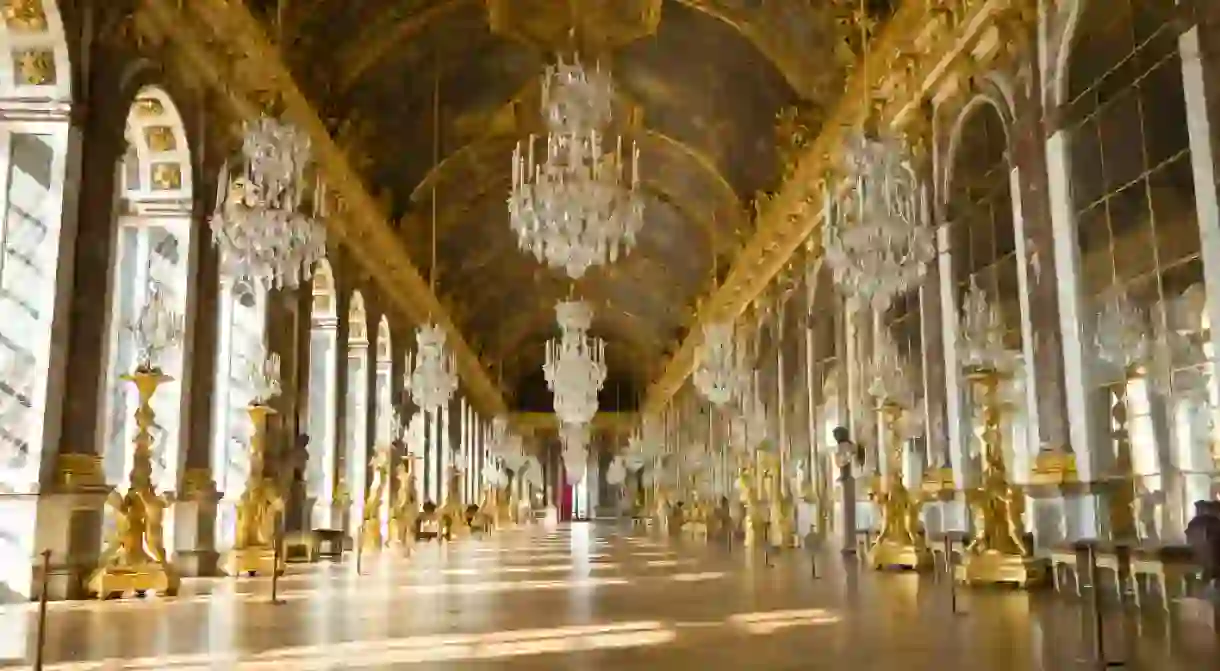Films Set At The Palace Of Versailles

The Palace of Versailles is all about the whopping statistics: 87, 728,720 square feet of grounds and 721,206 of floorspace, 7,527,122 visitors each year, 6,123 paintings, 2,102 sculptures, 2,000 windows, 1,400 fountains, 1,250 chimneys, 700 rooms, and 67 staircases. And we can add to that list more than 170 motion pictures that have been shot on location here. Most of these movies are set during the 17th and 18th centuries when the palace served as the principal residence of the French kings from Louis XIV to Louis XVI. Here we take a look at five of the best from the past three decades.
Did you know – Culture Trip now does bookable, small-group trips? Pick from authentic, immersive Epic Trips, compact and action-packed Mini Trips and sparkling, expansive Sailing Trips.
A Little Chaos (2014)
This horticulturally themed period drama was actor Alan Rickman’s second foray into directing after 1997’s The Winter Guest. The premise is simple: Matthias Schoenaerts is André Le Nôtre, the landscape architect to Rickman’s King Louis XIV, who is in need of a helping hand with a particularly tricky fountain project. Enter Kate Winslet as the rule-breaking, chaos-creating Sabina De Barra. Helen McCrory and Stanley Tucci provide entertaining support to this staid pairing as bitchy courtier and camp aide respectively. On the whole, it’s a fairly silly and sentimental affair with Rickman’s turn as a grieving king and the shots of Versailles in full bloom its redeeming features.
Farewell, My Queen (2012)
Benoît Jacquot’s absorbing film was adapted from the novel of the same name (Les Adieux à la reine in French) by Chantal Thomas and premiered at the 62nd Berlin International Film Festival. It opens on July 14, 1789, with news of the storming of the Bastille reaching Versailles. We then see the next three days unfold through the eyes of Sidonie Laborde, played by Léa Seydoux, whose job it is to read to Diane Kruger’s Marie Antoinette. The film tells a familiar story from a new perspective and in so doing offers a fresh take on the fall of the absolute monarchy and a rare insight into the underbelly of the palace from the bowls of its kitchens to the filth of the servants’ quarters.
Marie Antionette (2006)
Sofia Coppola’s film is a highly stylized and unashamedly sympathetic portrait of Madame Déficit as played by Kirsten Dunst. It tells of the 14-year-old archduchess of Austria’s betrothal to Jason Schwartzman‘s Dauphin of France, the early, childless years of their marriage, sudden ascension to the throne and eventual demise. However, we are spared the messy end at the Place de la République as this is a truncated biography, one that sees life as only truly existing within the confines of the palace grounds. The film was praised for its ingenious soundtrack which mixes classical recordings with New Wave and post-punk tracks, its Oscar-winning set design, and the poised performance of its director and leading lady. The boos it received from sections of the French press at Cannes (how dare an American reimagine a villain from French history) only served to reinforce its success.
Ridicule (1996)
Directed by Patrice Leconte, the film sets out to examine social injustice in France in the late 18th century. What it shows us are two worlds: one in which callous and corrupt aristocrats thrived on a diet of withering putdowns and the avoidance of humiliation, and another in which a nation was starving to death and ravaged by disease. It is obsessed with the witty repartee of court life, so be sure to find a copy with decent subtitles and sharpen your ears for some biting dialogue.
Dangerous Liaisons (1988)
Stephen Frears’ film is the third incarnation of a story that was originally written by Pierre Choderlos de Laclos in the 18th century and then adapted for the stage by Christopher Hampton. It is the original cinematic tale of deceit and sexual manipulation (we have it to thank for Cruel Intentions) and follows John Malkovich’s Vicomte de Valmont on a quest to seduce Michelle Pfeiffer’s Madame de Tourvel, destroy Uma Thurman’s virginal Cécile de Volanges, and eventually bed the ultimate queen bee, the Marquise de Merteuil, as brought to coldblooded life by Glenn Close. The film was a sensation, nominated for seven Academy Awards and winning three for Best Adapted Screenplay, Best Costume Design, and Best Art Direction.













